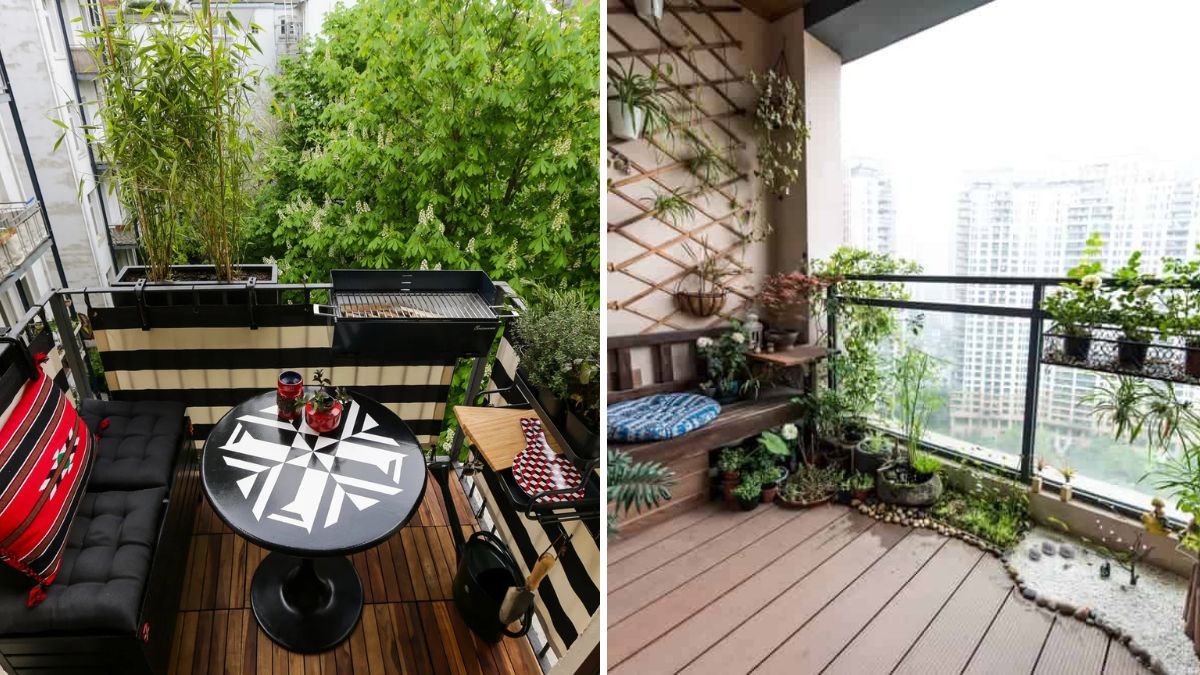Balcony gardening is an excellent way to bring greenery into urban spaces, even when outdoor space is limited. However, one of the most common challenges faced by balcony gardeners is soil drying too quickly. Containers, planters, and pots exposed to sun, wind, and high temperatures can lose moisture rapidly, putting plants under stress and affecting their growth and yield. Learning how to maintain consistent soil moisture is essential for healthy plants, vibrant flowers, and productive vegetables on your balcony.
This guide explores why soil dries quickly on balconies, techniques to retain moisture, soil preparation tips, watering strategies, and additional preventive measures to create a thriving balcony garden.
Why Balcony Soil Dries Quickly
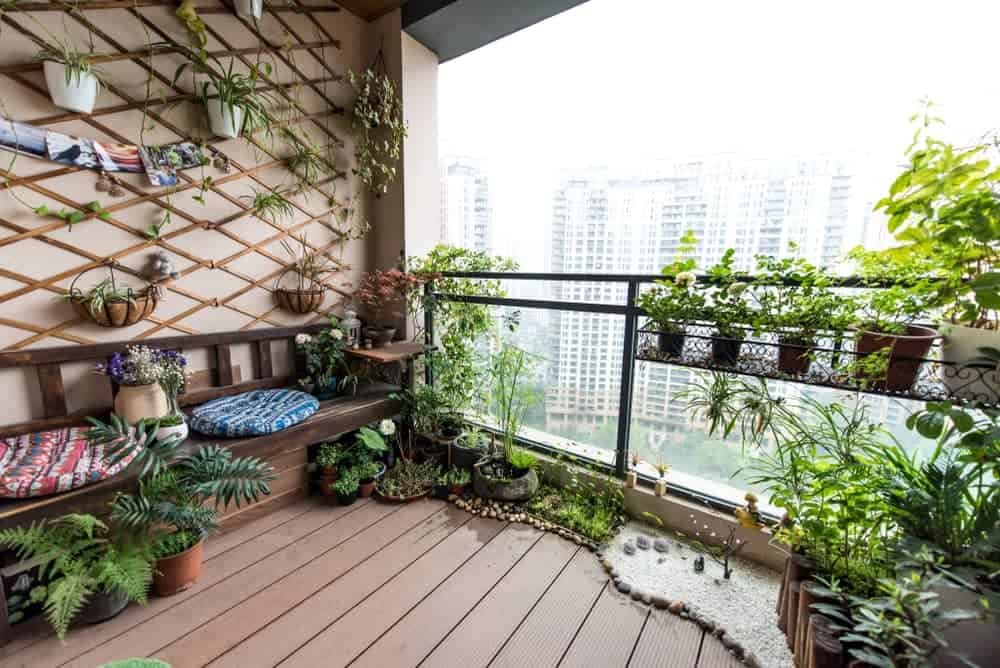
Understanding the factors that accelerate soil drying helps in planning preventive measures:
- Exposure to Sunlight: Direct sunlight heats the soil, causing water to evaporate rapidly.
- Wind: Open balconies often experience strong winds, which accelerate moisture loss from soil and leaves.
- Shallow Containers: Small pots and shallow planters dry faster than deeper ones because they hold less soil and water.
- Soil Composition: Sandy or light soils drain quickly, leading to rapid moisture loss.
- High Temperature: Warm weather increases evaporation rates, particularly in urban heat islands.
Recognizing these factors allows gardeners to take proactive steps to maintain soil moisture.
Step 1: Choose the Right Containers
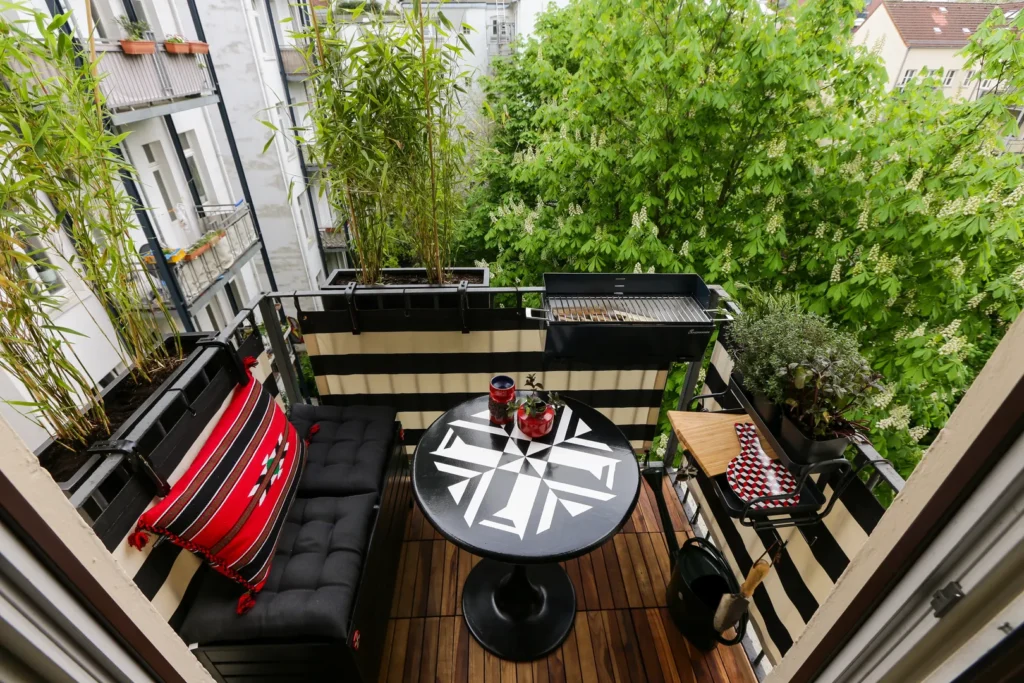
The type of container significantly affects soil moisture retention:
- Size Matters: Larger containers hold more soil and water, reducing the frequency of drying.
- Material:
- Plastic pots: Retain moisture longer than porous terracotta.
- Terracotta: While aesthetically pleasing, these pots dry out faster and require more frequent watering.
- Ceramic/Glazed: Good water retention but heavy; ensure drainage holes are present.
- Shape and Depth: Deeper pots allow roots to access more moisture, while shallow pots dry quickly.
- Drainage Consideration: Ensure containers have proper drainage to prevent waterlogging, but balance it with the need for moisture retention.
Selecting the right container ensures soil retains adequate moisture while preventing root rot.
Step 2: Use Moisture-Retaining Soil Mix
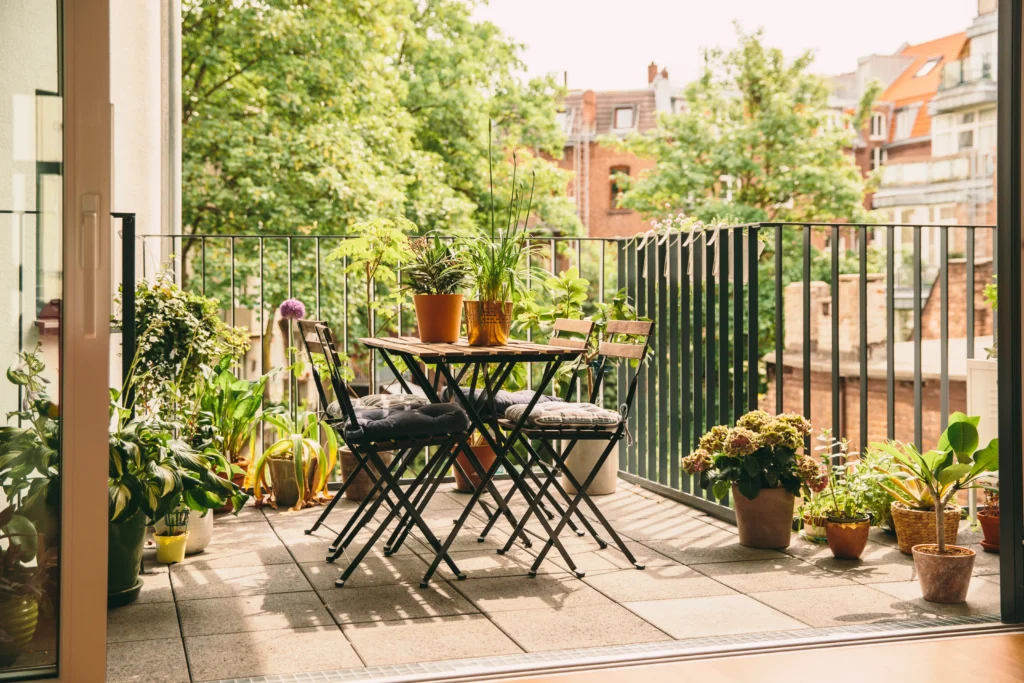
Soil composition plays a vital role in retaining moisture:
- Potting Mix: Avoid garden soil, which can compact and drain excessively.
- Organic Matter: Compost, coco coir, and peat moss retain water while supplying nutrients.
- Aeration: Mix in perlite, vermiculite, or sand for proper drainage and root oxygenation.
- pH Balance: Most balcony plants prefer slightly acidic to neutral soil (pH 6–7), which ensures efficient nutrient absorption.
A well-prepared soil mix balances water retention and drainage, keeping plants healthy.
Step 3: Mulching the Soil Surface
Mulching is one of the most effective techniques for reducing soil evaporation:
- Organic Mulch: Use straw, dried leaves, bark chips, or compost to cover soil.
- Layer Thickness: Apply a 2–3 inch layer to effectively insulate soil and retain moisture.
- Benefits:
- Reduces water loss through evaporation.
- Moderates soil temperature, protecting roots from heat stress.
- Prevents soil crusting and compaction.
Mulching is a simple but powerful way to maintain consistent moisture and healthy root environments.
Step 4: Watering Techniques for Balcony Plants
Proper watering strategies are critical for keeping soil moist:
- Check Soil Moisture: Insert a finger 1–2 inches into the soil; water only if dry.
- Deep Watering: Water slowly and thoroughly to ensure the entire root zone is hydrated.
- Watering Frequency: Adjust based on weather conditions, container size, and plant type.
- Bottom Watering: Pour water into saucers or trays and allow roots to absorb it, reducing surface evaporation.
- Morning Watering: Water early in the day to minimize evaporation during hot hours.
Correct watering practices ensure deep root hydration and reduce frequent drying.
Step 5: Grouping Plants and Containers
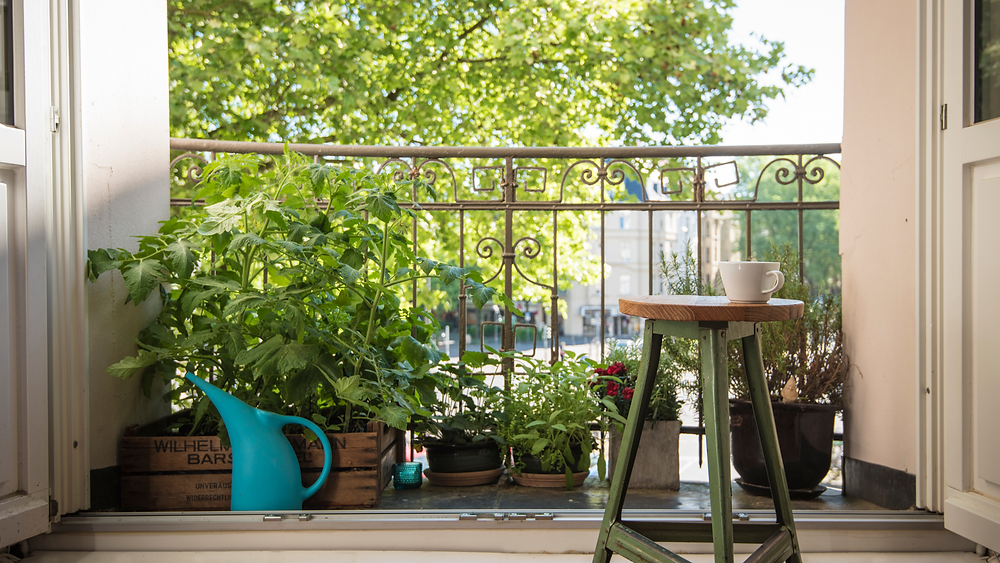
Strategically arranging plants on the balcony can help conserve moisture:
- Cluster Pots Together: Grouping containers creates a microenvironment with higher humidity and reduces water loss.
- Shade Larger Plants: Use taller plants to provide partial shade to smaller pots, reducing exposure to direct sunlight.
- Wind Protection: Place plants near walls or screens to shield them from strong winds, which accelerate drying.
Thoughtful placement creates a supportive microclimate for your balcony garden.
Step 6: Using Water Retention Techniques
Modern gardening techniques can further prevent rapid soil drying:
- Self-Watering Pots: These containers have reservoirs that supply water gradually, ensuring consistent moisture.
- Water Retention Crystals: Add hydrogel crystals to the soil to absorb water and release it slowly.
- Drip Irrigation Systems: Automated drip systems provide controlled, regular watering without overwatering.
- Water Trays: Place saucers under pots to hold excess water, allowing plants to draw moisture as needed.
These techniques extend intervals between watering and maintain optimal soil moisture.
Step 7: Choosing the Right Plants
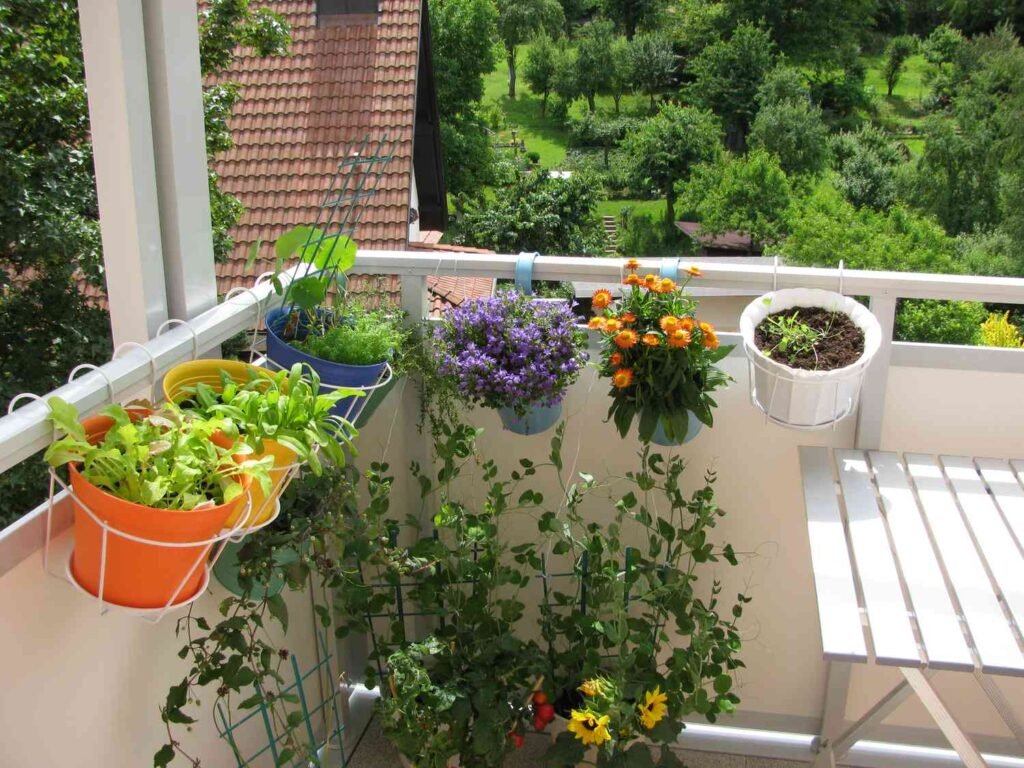
Some plants are naturally more drought-tolerant and suitable for balconies:
- Moisture-Loving Plants: Ferns, peace lilies, calatheas, and herbs like basil retain turgidity if soil is kept consistently moist.
- Drought-Tolerant Plants: Succulents and cacti require less frequent watering but benefit from mulching in hot conditions.
- Leafy Greens and Vegetables: Lettuce, spinach, and herbs perform best when soil moisture is maintained consistently.
Choosing plants according to moisture requirements reduces stress and prevents wilting.
Step 8: Seasonal and Environmental Adjustments
Seasonal changes and weather patterns influence soil drying:
- Summer: Increase watering frequency, use shading, and apply thicker mulch layers.
- Winter: Reduce watering but maintain consistent soil moisture; prevent soil from drying completely.
- Rainy Season: Ensure proper drainage to avoid waterlogging while keeping soil aerated.
- Windy Conditions: Use screens, trellises, or windbreaks to reduce evaporation.
Adapting care to environmental conditions maintains consistent soil moisture year-round.
Step 9: Fertilization and Soil Health
Healthy soil retains moisture better:
- Regular Feeding: Use organic or slow-release fertilizers to maintain soil fertility.
- Compost Top-Dressing: Adds organic matter and improves soil structure.
- Mulch Renewal: Refresh mulch periodically to maintain moisture retention efficiency.
- pH Monitoring: Adjust soil pH if necessary for optimal nutrient absorption.
Nutrient-rich, healthy soil supports strong plant roots and efficient water use.
Step 10: Monitoring and Maintenance
Continuous observation helps prevent soil from drying:
- Daily Checks: Inspect soil surface and leaves for signs of stress or drying.
- Adjust Watering: Increase frequency during heatwaves or for fast-draining containers.
- Pruning: Remove excessive foliage to reduce water loss through transpiration.
- Soil Renewal: Refresh soil annually to maintain structure and moisture-holding capacity.
Regular monitoring ensures plants remain healthy and soil moisture is maintained consistently.
Additional Tips for Balcony Soil Moisture Retention
- Reflective Surfaces: Use light-colored pots or reflective balcony flooring to reduce heat absorption.
- Windbreaks: Install screens or lattice panels to reduce airflow over pots.
- Shade Nets: Provide temporary shading during intense sun exposure.
- Plant Cover Crops: Fast-growing groundcover plants in larger pots reduce soil exposure and evaporation.
- Evaporation Barriers: Cover soil surface with decorative stones or pebbles in addition to mulch.
These strategies create a microclimate that reduces water loss and enhances plant health.
Conclusion
Preventing balcony soil from drying quickly requires a holistic approach, combining container selection, soil preparation, mulching, watering practices, and strategic plant arrangement. Understanding the factors that accelerate moisture loss—sunlight, wind, container size, and soil type—enables gardeners to implement effective preventive measures.
By using moisture-retaining soil, mulches, self-watering systems, and appropriate plant choices, balcony gardeners can maintain consistent soil moisture, ensuring healthy roots, vibrant foliage, and productive plants. Seasonal adjustments, wind protection, and regular maintenance further enhance water retention.
With thoughtful planning and care, even the smallest balcony can become a lush, thriving garden where soil retains moisture efficiently, creating a sustainable and low-stress urban gardening experience. Healthy soil and well-watered plants are the foundation of a beautiful balcony garden that flourishes year-round.
